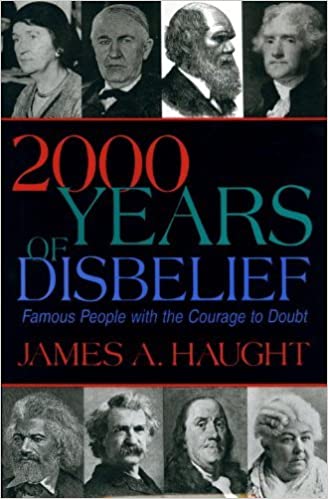This piece was reprinted by OpEd News with permission or license. It may not be reproduced in any form without permission or license from the source.
In the vast annals of faith-based killing, some episodes are widely known, while other religious bloodbaths are oddly forgotten.
The whole world is aware of the stunning "martyr" attack of Sept. 11, 2001. And most people recall the Jonestown tragedy and the Waco siege as well as historic horrors: the Inquisition, the witch-hunts, the Crusades, the Reformation wars, the pogroms against Jews, the era of human sacrifice, etc.
However, some other faith-driven tragedies have mostly vanished from public awareness. For example, few Americans know that Catholic-Protestant strife caused a cannon battle in the streets of Philadelphia in 1844. Or that the Taiping Rebellion led by a mystic who said he was God's second son after Jesus, with a divine mandate to "destroy demons" killed millions of Chinese in the 1850s.
Here's another half-forgotten holy war: the Cristero conflict that killed 90,000 Mexicans in the 1920s.
It culminated a long, convoluted, gory story spanning a century. It was a classic example of the age-old struggle between reformers and the priest class which gains power in a society, entrenches itself with rulers, lives off the populace, and imposes strictures on the people.
The Cristero War showed the power of religion to propel believers into bloodshed. And it showed that attempts to suppress religion by law can trigger violent "blowback."
After Mexico won independence from Spain in 1821, democracy advocates sought to loosen the Roman Catholic Church's grip on Mexican society. Some anticlerical laws were passed, but they were revoked by dictator Santa Anna in 1834.
Then liberal Benito Juarez, a Zapotec Indian, came to power in the 1850s and enacted La Reforma, a sweeping plan for secular democracy. Among various reforms, it ended Catholicism's exclusive role as the state religion, curtailed the church's great land wealth, halted ecclesiastical courts, abolished church burial fees, and revoked priestly control of education, marriage and other facets of daily life.
The changes were written into a new constitution but the church excommunicated all Mexican officials who swore to uphold it. Civil war erupted, and religious conservatives seized Mexico City, driving the liberal government to Veracruz. The United States supported Juarez, and his regime defeated the rebels in 1861.
Exiled Mexican conservatives appealed to Catholic France, Catholic Spain and the pope, plus other Europeans. French, Spanish and some English forces invaded Mexico, driving Juarez to the north. A Habsburg noble, Maximilian, was installed as emperor but he was slow to revoke the anticlerical laws. The clergy and the pope's emissary felt betrayed. Europeans withdrew their military backing. Juarez regrouped, defeated Maximilian's militia, and executed the emperor in 1867.
After Juarez died, successors added further church-state separation. Religious oaths were banned in courts. Church ownership of land was forbidden. But dictator Porfirio Diaz seized power in an 1876 revolt, and gradually restored Catholic privileges during his long reign.
After 1900, young radicals began calling for the overthrow of Diaz, plus distribution of land to peasants and abolition of priestly power. Their unrest finally exploded in the Mexican Revolution that raged from 1910 to 1916. Then the victorious reformers drafted a 1917 constitution mandating democracy and imposing tough limits on the clergy. It halted church control of schools. It banned monastic orders. It eliminated religious processions and outdoor masses. It again curtailed church ownership of property. And it forbade priests to wear clerical garb, vote, or comment on public affairs in the press.
At first, this strong crackdown was only lightly enforced, and church protests were subdued. But in 1926, new President Plutarco Calles an open atheist intensified the pressure. He decreed a huge fine (equal to $250 U.S. dollars at the time) on any priest who wore a clerical collar, and demanded five years in prison for any priest who criticized the government.
In response, Catholic bishops called for a boycott against the government. Catholic teachers refused to show up at secular schools. Catholics refused to ride public transportation. Other civil disobedience occurred. The pope in Rome approved the resistance. The government reacted by closing churches. Ferment grew.
(Note: You can view every article as one long page if you sign up as an Advocate Member, or higher).





